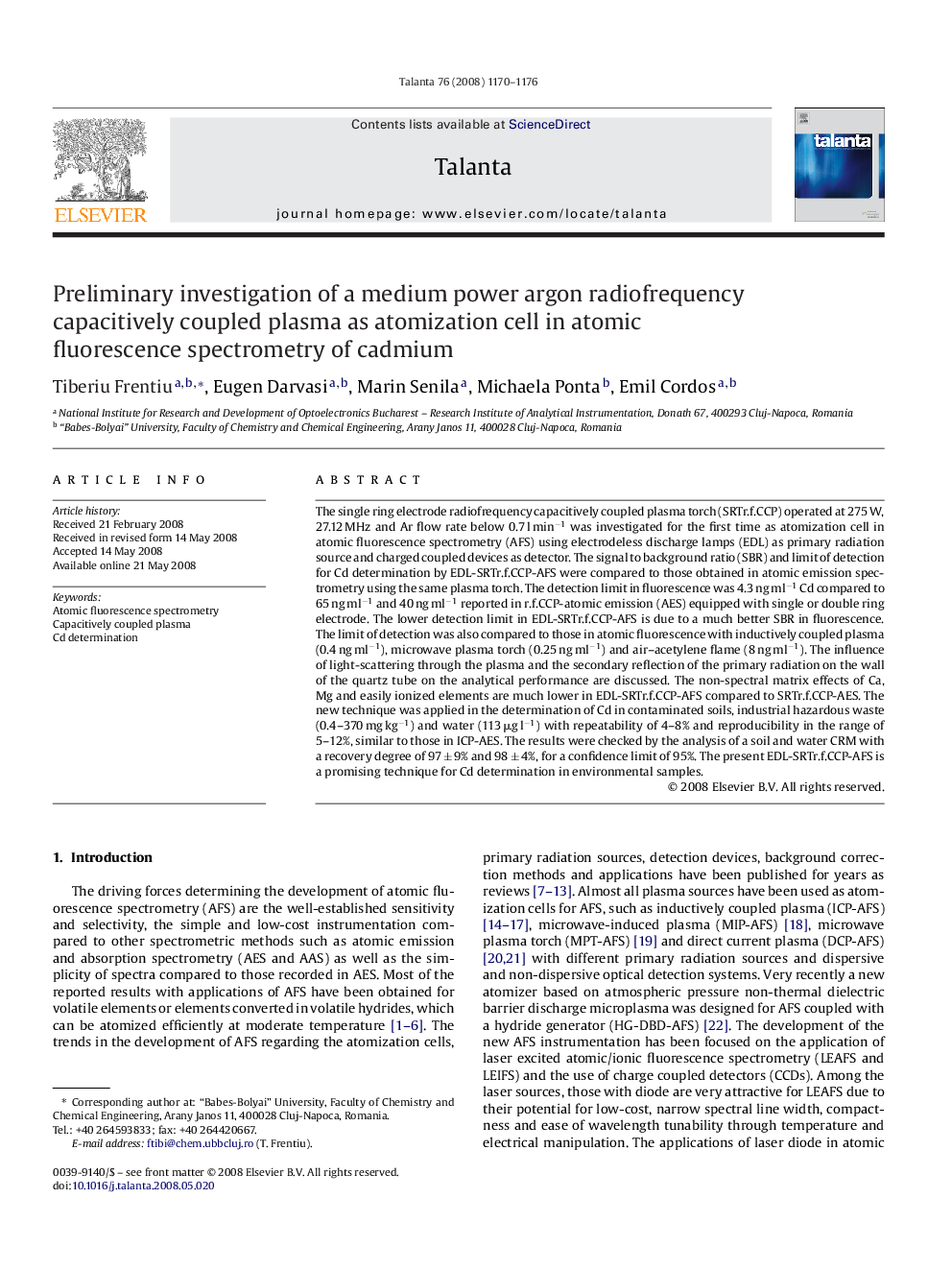| Article ID | Journal | Published Year | Pages | File Type |
|---|---|---|---|---|
| 1245455 | Talanta | 2008 | 7 Pages |
The single ring electrode radiofrequency capacitively coupled plasma torch (SRTr.f.CCP) operated at 275 W, 27.12 MHz and Ar flow rate below 0.7 l min−1 was investigated for the first time as atomization cell in atomic fluorescence spectrometry (AFS) using electrodeless discharge lamps (EDL) as primary radiation source and charged coupled devices as detector. The signal to background ratio (SBR) and limit of detection for Cd determination by EDL-SRTr.f.CCP-AFS were compared to those obtained in atomic emission spectrometry using the same plasma torch. The detection limit in fluorescence was 4.3 ng ml−1 Cd compared to 65 ng ml−1 and 40 ng ml−1 reported in r.f.CCP-atomic emission (AES) equipped with single or double ring electrode. The lower detection limit in EDL-SRTr.f.CCP-AFS is due to a much better SBR in fluorescence. The limit of detection was also compared to those in atomic fluorescence with inductively coupled plasma (0.4 ng ml−1), microwave plasma torch (0.25 ng ml−1) and air–acetylene flame (8 ng ml−1). The influence of light-scattering through the plasma and the secondary reflection of the primary radiation on the wall of the quartz tube on the analytical performance are discussed. The non-spectral matrix effects of Ca, Mg and easily ionized elements are much lower in EDL-SRTr.f.CCP-AFS compared to SRTr.f.CCP-AES. The new technique was applied in the determination of Cd in contaminated soils, industrial hazardous waste (0.4–370 mg kg−1) and water (113 μg l−1) with repeatability of 4–8% and reproducibility in the range of 5–12%, similar to those in ICP-AES. The results were checked by the analysis of a soil and water CRM with a recovery degree of 97 ± 9% and 98 ± 4%, for a confidence limit of 95%. The present EDL-SRTr.f.CCP-AFS is a promising technique for Cd determination in environmental samples.
